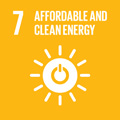- Docente: Sergio Callegari
- Credits: 6
- SSD: ING-INF/01
- Language: Italian
- Teaching Mode: In-person learning (entirely or partially)
- Campus: Cesena
- Corso: Second cycle degree programme (LM) in Electronics and Telecommunications Engineering for Energy (cod. 8770)
-
from Sep 22, 2025 to Dec 16, 2025
Learning outcomes
By the end of the course, the student has competence in the design of analog electronic modules and systems for signal synthesis and processing. Specifically: - He knows how to design different types of signal synthesis modules, including sinusoidal oscillators, relaxation oscillators, generators for some classes of spread spectrum waveforms and aperiodic waveforms, crystal oscillators, timers, etc; - He is able to design signal processing blocks based both on continuous and discrete time approaches. Particularly, he can design switched capacitors and switched current circuits; - He has basic knowledge on how to encode information in low depth formats, suitable for: switched mode power converters operating with a high energy efficiency; as an intermediate representation in data conversion; or in frequency synthesis systems such as fractional PLLs.
Course contents
- Introduction to signal processing and synthesis using analog circuits
- Design of signal generation circuits
- Periodic oscillators
- Circuits for the generation of aperiodic and chaotic signals
- Introduction to Phase-Locked Loops (if time permits)
- Nonlinear analog functional blocks
- Logarithmic and antilogarithmic circuits
- Rectifier circuits and circuits for implementing piecewise-linear functions
- Multipliers
- Design techniques for resistorless signal processing circuits
- gm-C architectures
- Discrete-time analog circuits
- General considerations
- Switched-capacitor circuits
- Switched-current circuits
- Reconfigurable and programmable analog circuits
- Modulation techniques for the synthesis of low-depth, discrete-valued signals
- PWM and PDM modulations
- Delta-sigma modulations
- Applications in waveform encoding
- Applications in high-efficiency power conversion
- Fundamentals of analog-to-information conversion (if time permits)
Readings/Bibliography
The main reference material for students consists of the notes taken during lectures. The course, in fact, covers and integrates a variety of topics, making it impossible to adopt a single textbook as a comprehensive reference.
However, during the course the following will be indicated:
- books useful for the in-depth study of specific topics;
- recently published articles from international scientific journals.
In addition, the instructor will provide part of the teaching material through the “Virtuale” platform, including:
- PDF files containing the slides used during lectures (each file will be made available only after the corresponding lecture);
- demonstration code related to the simulations and experiments conducted in class;
- documentation concerning seminars that may be included in the course;
- articles and other materials useful for further study of topics covered in the course.
Some texts that may be of interest for deepening the understanding of basic concepts include:
- L. O. Chua, C. A. Desoer, E. S. Kuh, “Linear and Nonlinear Circuits”, McGraw-Hill
- Calzolari P. Ugo, Graffi Sergio, “Elementi di Elettronica”, Zanichelli
- A. V. Oppenheim, R. W. Schafer, “Discrete Time Signal Processing”, Prentice-Hall
- A. Antoniu, “Digital Filters: Analysis, Design and Applications”, McGraw-Hill
Teaching methods
The course consists of:
- theoretical lectures held in the classroom;
- computer-based demonstrations;
- exercises carried out in class by the instructor, either on the board or using software tools.
At the end of the course, as an optional activity, students are encouraged to design a small project with the guidance of the instructor, and to develop it using formal methods and simulation. In some cases, this has also led to prototyping and measurements. Students are then invited to produce a short report describing the project.
Assessment methods
The assessment of the level of competence achieved takes place through a final oral examination.
The exam is intended to verify both the understanding of the theoretical aspects of the course and the ability to apply them to practical problem-solving. It generally consists of three questions: two focused on theoretical topics and one of a more applied nature, in which the student is asked to outline the solution to an analysis or design problem.
Students who have completed the optional project activity may choose to replace the applied question with a discussion of their project report.
If the number of students attending the course exceeds 25, the final oral exam may be partially or entirely replaced by a written test.
Teaching tools
The following tools will be used during the course:
- Video projector and slides
- Blackboard
- Personal computer with simulation and computer-aided design software, used to demonstrate the concepts presented:
- circuit-level simulators (LTspice);
- system-level simulators (MATLAB/Simulink or Scilab/Xcos);
- optional use of Python notebooks.
Office hours
See the website of Sergio Callegari
SDGs


This teaching activity contributes to the achievement of the Sustainable Development Goals of the UN 2030 Agenda.
